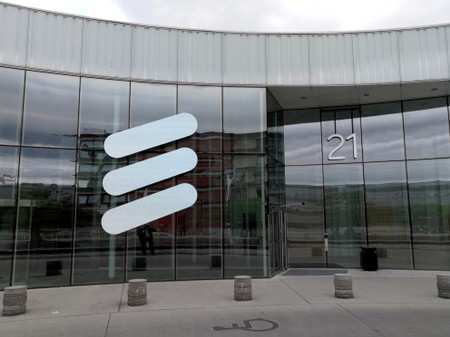
NEW DELHI: Swedish telecom gear maker Ericsson on Monday said that 5G subscriptions in India will only available in 2022, against its previous estimate that the 5G deployment and initial commercial availability would take place in 2020.
5G subscriptions will represent 11 percent of mobile subscriptions at the end of 2025, Ericsson said.
The report comes at a time when India's private telcos are going through a severe financial stress and may not be in a situation to participate in the upcoming 5G auction.
The Indian government is planning to auction spectrum, including 5G airwaves within this fiscal year. However, ET recently reported that spectrum auction, which requires a high level of investment, seems unlikely this fiscal year, due to the financial situation of telcos like Bharti Airtel and Vodafone Idea Limited.
Ericsson, in its mobility report, said that India's 4G LTE subscriptions will reach 150 million by the end of 2019 to pass GSM/EDGE as the dominant technology. LTE is expected to represent 80% of India's mobile subscriptions by the end of 2025, driven by rapid network transformation.
India's mobile broadband technologies will account for 57 percent of overall mobile subscriptions at the end of the year, and the share of smartphone subscriptions is expected to have increased from 48 percent to 54 percent, Ericsson said.
"Modernizing existing networks, improving network performance and increasing user experience continues to be at the core of every service provider’s day-to-day business, both in India as well as globally," Nitin Bansal, Head of Network Solutions for the Market Area Southeast Asia, Oceania, and India, said in a statement.
In the India region, the average monthly mobile data usage per smartphone has seen an extraordinary increase in recent years, becoming the highest in the world at 13.9 GB per month with a forecast of an increase to 24GB per month by 2025 at a CAGR of 10%.
“Low prices for mobile broadband services, affordable smartphones, and people’s changing video viewing habits have continued to drive monthly usage growth in the region," Bansal said.
By 2025, 500 million additional smartphone users are expected in India and total traffic is projected to triple, reaching 22EB per month in 2025. This comes from two factors: high growth in the number of smartphone users and an increase in average usage per smartphone, Ericsson said.
The global number of 5G subscriptions to top 2.6 billion within the next six years, driven by sustained momentum and a rapidly developing 5G ecosystem.
Ericsson said that average monthly data-traffic-per-smartphone is forecast to increase from the current figure of 7.2 GB to 24 GB by the end of 2025, in part driven by new consumer behavior, such as Virtual Reality (VR) streaming. With 7.2 GB per month, one can stream 21 minutes of HD video (1280 x 720) daily, while 24 GB would allow streaming 30 minutes of HD video with an additional six minutes of VR each day.
The report also projects that 5G will cover up to 65 percent of the global population by the end of 2025, and handle 45 percent of global mobile data traffic.
2019 is the year leading communications service providers in Asia, Australia, Europe, Middle East, and North America switched on their 5G networks. South Korea has already seen a big 5G uptake since its April 2019 launch. More than three million subscriptions were collectively recorded by the country’s service providers by the end of September 2019.
China’s launch of 5G in late October has also led to an update of the estimated 5G subscriptions for year-end 2019, from 10 million to 13 million.
“It is encouraging to see that 5G now has broad support from almost all device makers. In 2020, 5G-compatible devices will enter the volume market, which will scale up 5G adoption. The question is no longer if, but how quickly we can convert use cases into relevant applications for consumers and enterprises. With 4G remaining a strong connectivity enabler in many parts of the world, modernizing networks is also key to this technological change we’re going through," Fredrik Jejdling, Executive Vice President and Head of Networks, Ericsson, said in a statement.
Given its current momentum, 5G subscription uptake is expected to be significantly faster than that of LTE. The most rapid uptake is expected in North America with 74 percent of mobile subscriptions in the region forecast to be 5G by the end of 2025. North-East Asia is expected to follow at 56 percent, with Europe at 55 percent.
Other forecasts include total number of cellular IoT connections now seen at five billion by the end of 2025 from 1.3 billion by end 2019 – a compound annual growth rate of 25 percent. NB-IoT and Cat-M technologies are estimated to account for 52 percent of these cellular IoT connections in 2025.
ET TELECOM
No comments:
Post a Comment